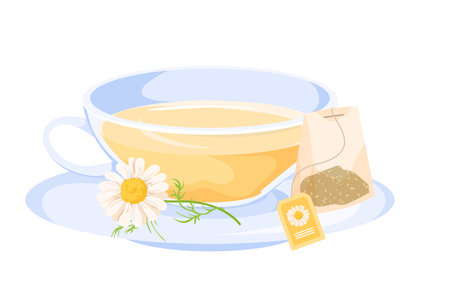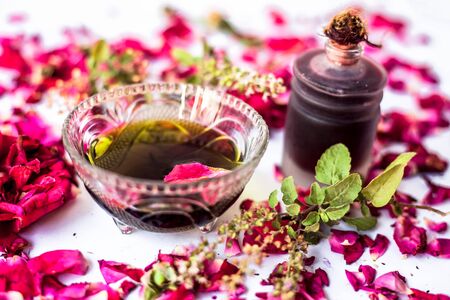1. Understanding Ayurvedic Detox: The Indian Wisdom
Ayurveda, the age-old science of life rooted deeply in Indian culture, offers a holistic approach to detoxification that goes beyond mere physical cleansing. In India, where traditions and modernity blend seamlessly, Ayurvedic detox is much more than a passing trend—it’s a way of realigning with our natural rhythms amidst today’s fast-paced lifestyle. At its core, Ayurvedic detoxification focuses on balancing the three doshas—Vata, Pitta, and Kapha—using time-tested Indian remedies like sesame oil, pure ghee, and herbal juices. These methods are not just ancient rituals but practical solutions for everyday urban stress, pollution, and dietary challenges. By understanding these principles, we can harness authentic Indian wisdom to support our body’s natural cleansing processes while staying connected to our cultural roots.
Power of Sesame Oil: Abhyanga and Oil Pulling
In the heart of Indian homes, sesame oil is not just a kitchen staple; it is revered as a cornerstone of Ayurvedic detoxification. The use of sesame oil in abhyanga (self-massage) and oil pulling reflects age-old wisdom that emphasizes holistic well-being. These rituals, passed down through generations, blend seamlessly into modern wellness routines for those seeking natural cleansing methods.
Abhyanga: Nourishing Body and Mind
Abhyanga is the practice of massaging warm sesame oil onto the body, typically before a bath. This ritual is believed to balance doshas, enhance circulation, and remove ama (toxins) from the tissues. The rhythmic motion not only soothes muscles but also calms the mind, making it an essential act of self-care in Indian culture.
Key Benefits of Abhyanga with Sesame Oil
| Benefit | Description |
|---|---|
| Detoxification | Helps draw out toxins through the skin and lymphatic system. |
| Improved Circulation | Stimulates blood flow, promoting nourishment to cells. |
| Stress Relief | Reduces anxiety and promotes relaxation through touch therapy. |
| Skin Health | Keeps skin supple and moisturized, preventing dryness. |
Oil Pulling: Oral Detox Tradition
Oil pulling, known as “kavala” or “gandusha” in Ayurveda, involves swishing sesame oil in the mouth for 10-20 minutes every morning before brushing your teeth. This daily habit is cherished in Indian households for its ability to cleanse oral tissues, draw out toxins, and support overall health. It’s a simple yet profound step towards balancing internal health starting from the mouth.
Cultural Relevance in India
Sanskrit texts like Charaka Samhita highlight both abhyanga and oil pulling as daily dinacharya (routines) for maintaining harmony between body, mind, and spirit. Even today, many Indian families integrate these practices as part of their morning rituals, especially during seasonal transitions or after festivals when detoxification is needed most.

3. Ghee for Internal Cleansing and Nourishment
In Ayurveda, ghee—clarified butter—holds a sacred place as both a food and medicine. For centuries, Indian households have relied on ghee not only for its rich taste but also for its detoxifying properties. When consumed in moderation, pure cow ghee acts as a gentle internal cleanser (known as snehana), lubricating the digestive tract and helping to flush out toxins (ama) that accumulate due to irregular eating habits or unhealthy lifestyle choices.
The Science Behind Ghee’s Cleansing Power
Ghee is rich in short-chain fatty acids such as butyric acid, which supports healthy gut flora and enhances digestion—a key factor in Ayurvedic detox routines. Regular intake of ghee helps soften accumulated waste in the intestines, making it easier for the body to eliminate them naturally. According to classical Ayurvedic texts, ghee also penetrates deep tissues, promoting cellular rejuvenation and reducing inflammation.
How to Include Ghee in Your Daily Diet
To experience the cleansing benefits of ghee, Ayurveda recommends adding 1-2 teaspoons of melted ghee to your morning dalia (porridge), khichdi, or warm milk. Some practitioners advise starting the day with a teaspoon of ghee on an empty stomach during seasonal cleanses (Panchakarma). However, always consult an Ayurvedic doctor before beginning any detox regimen, especially if you have underlying health conditions.
Cultural Wisdom: Ghee in Indian Rituals
Across India, ghee is not just a dietary staple; it is offered in aarti lamps, used in festive sweets like ladoos and halwa, and plays a vital role in rituals symbolising purity and nourishment. This age-old respect highlights why incorporating ghee into your diet aligns with both wellness and tradition. Embrace this golden elixir for holistic cleansing and deep nourishment—just as our ancestors did!
4. Herbal Juices: Local Ingredients for Detox
Ayurveda has long celebrated the power of herbal juices, especially those derived from indigenous Indian ingredients, for their natural detoxification properties. Consuming these juices not only supports internal cleansing but also fits seamlessly into the Indian lifestyle and palate. Below, we highlight some of the most popular detoxifying juices made from locally sourced herbs and their specific health benefits.
Amla Juice: Vitamin C Powerhouse
Amla (Indian gooseberry) is a staple in Ayurvedic remedies due to its high vitamin C content and antioxidant properties. Drinking amla juice on an empty stomach helps flush out toxins, boosts immunity, and improves skin texture. Its tangy taste is familiar to many Indian households and can be consumed alone or mixed with honey for added flavor.
Tulsi Juice: The Sacred Basil Elixir
Tulsi (holy basil) holds a revered place in Indian homes for its spiritual and medicinal significance. Tulsi juice acts as a potent cleanser for the respiratory tract and digestive system. Regular intake aids in stress reduction, purifies blood, and enhances overall vitality—a true reflection of holistic Ayurvedic wellness.
Neem Juice: Bitter Yet Beneficial
Neem leaves are renowned for their intensely bitter taste and powerful detox effects. Neem juice is traditionally used to purify the blood, clear skin disorders, and support liver function. Although the flavor may require getting used to, its benefits make it a favorite during seasonal cleanses, especially in North Indian traditions.
Wheatgrass Juice: Modern Superfood with Ancient Roots
Wheatgrass, while gaining popularity globally as a superfood, has deep roots in Indian natural healing practices. Packed with chlorophyll, vitamins, and minerals, wheatgrass juice revitalizes the body by promoting healthy digestion and improving energy levels. Many urban Indians have adopted this green elixir as part of their daily wellness rituals.
Comparison Table: Popular Herbal Juices & Their Benefits
| Juice | Main Ingredient | Detox Benefits |
|---|---|---|
| Amla Juice | Amla (Indian Gooseberry) | Flushes toxins, boosts immunity, enhances skin health |
| Tulsi Juice | Tulsi (Holy Basil) | Purifies blood, reduces stress, supports respiratory health |
| Neem Juice | Neem Leaves | Cleanses liver, treats skin issues, promotes oral health |
| Wheatgrass Juice | Wheatgrass Shoots | Aids digestion, increases energy, alkalizes body |
Practical Tips for Daily Use
For best results, prepare these juices fresh at home using local produce available at sabzi mandis or organic stores. Start your morning with one type of juice on alternate days to gauge what suits your body constitution (prakriti). Always consult an Ayurvedic practitioner if you have specific health conditions or are undergoing Panchakarma therapies.
5. Seasonal Ayurveda: Timing Your Detox for Best Results
In Ayurveda, aligning your detox with the changing Indian seasons—known as Ritu—can amplify the benefits of cleansing and help maintain balance in mind and body. Each season brings its own qualities, impacting our doshas (Vata, Pitta, Kapha), and thus requires a unique approach to detoxification. The ancient Panchakarma tradition is especially revered for its deep cleansing protocols that are most effective when tailored to these seasonal shifts.
Understanding Ritu & Dosha Balance
India’s six seasons—Vasant (spring), Grishma (summer), Varsha (monsoon), Sharad (autumn), Hemant (pre-winter), and Shishir (winter)—each influence the accumulation or reduction of doshas. For instance, spring is ideal for Kapha balancing; summer calls for Pitta pacification; while winter focuses on nourishing Vata. By respecting these cycles, you can choose detox routines that work in harmony with nature’s rhythm.
Panchakarma: A Deep Cleansing Tradition
Panchakarma, an integral Ayurvedic practice, involves five main therapies designed to eliminate toxins and restore doshic balance. Traditionally performed at the change of seasons—especially during Vasant and Sharad—it includes snehana (oleation with sesame oil or ghee), swedana (herbal steam), virechana (therapeutic purgation), basti (medicated enemas), and nasya (nasal cleansing). These treatments not only support physical purification but also rejuvenate mental clarity.
Practical Seasonal Detox Tips
– Spring (Vasant): Focus on light fasting, herbal juices like amla or neem, and internal oleation with sesame oil to clear accumulated Kapha.
– Summer (Grishma): Emphasize cooling foods, ghee for soothing digestion, and gentle herbal infusions like coriander or rose.
– Monsoon (Varsha): Strengthen digestion with ginger-infused water, moderate use of sesame oil in abhyanga (self-massage), and avoid heavy detox during peak humidity.
– Autumn (Sharad): Opt for pitta-pacifying herbs like guduchi or aloe vera juice, mild virechana under expert guidance, and ghee-based cleansing.
– Winter (Hemant & Shishir): Nourish deeply with warm ghee, sesame oil massages, and rich herbal tonics such as ashwagandha or shatavari.
The key to a successful Ayurvedic detox lies in respecting your body’s needs according to Ritu. Consult a qualified Ayurveda practitioner before undergoing intensive Panchakarma therapies to ensure safety and maximum benefit. By syncing your natural cleansing rituals with India’s seasonal wisdom, you’ll experience holistic well-being rooted in time-tested tradition.
6. Daily Practical Tips for Seamless Integration
Adopting Ayurvedic detox practices like using sesame oil, ghee, and herbal juices can seem challenging, especially amidst the fast-paced Indian lifestyle—whether you live in a bustling city like Mumbai or a quieter rural setting. Here are some easy-to-follow tips to help you naturally cleanse your body without disrupting your daily routine.
Simple Morning Rituals
Start with Oil Pulling
Begin your day by swishing 1-2 teaspoons of sesame oil in your mouth for 5-10 minutes before brushing. This ancient habit, known as Gandusha, helps remove toxins and supports oral health.
Warm Water & Herbal Juice
Follow up with a glass of warm water mixed with a splash of fresh amla or aloe vera juice. This quick ritual aids digestion and gently kickstarts your system.
Midday Balancing with Ghee
Add Ghee to Your Meals
Incorporate a small spoonful of homemade or pure cow ghee into your dal, rice, or chapati during lunch. Ghee lubricates the digestive tract and helps absorb nutrients—a practice valued in both urban apartments and rural homes.
Evening Wind-Down
Herbal Teas for Detoxification
Brew yourself a cup of tulsi or ginger tea in the evening. These herbs are widely available across India and help calm the mind while supporting liver detoxification.
Do’s & Don’ts for Urban & Rural Lifestyles
Do’s:
- Set reminders: Use mobile alarms for morning oil pulling or evening herbal teas if your schedule is hectic.
- Source local ingredients: Whether from urban organic stores or rural markets, always choose fresh, unprocessed oils, ghee, and herbs.
- Listen to your body: Modify quantities based on how you feel—Ayurveda values personalisation over strict rules.
Don’ts:
- Avoid processed foods and reheated oils, which can create Ama (toxins) in the body.
- Don’t skip meals—instead, eat light and regularly to maintain digestive fire (Agni).
- Avoid late-night snacking; let your body rest and detoxify overnight.
By integrating these small but powerful changes into your daily life—be it in an urban flat or a rural village—you can enjoy the benefits of Ayurvedic cleansing without stress. Consistency is key: even five minutes daily can make a difference in your overall well-being.

